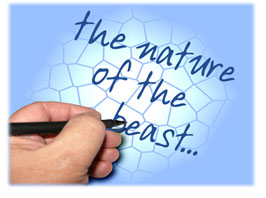Other than certainly typography, copywriting is possibly the most abused and the most neglected of all disciplines in today's advertising, marketing and communication worlds.
This is, perhaps, partly because of the ease and simplicity that it is now possible to produce such work due to technological advances, such as the computer, the internet and the Apple Mac which allows almost anyone to create an ad quickly but without having undergone the vital apprenticeship of studying and learning the basic principles of the writer's art NOR understanding the well-proven copy formats and those many well-researched tricks of the trade.
Far too much copy today is industry-based drivel, irrelevant trite, overly complex, contains too much 'assumption' and the worst of the bunch, is written by the advertisers themselves in 'advertiser language' (and not consumer language!).
The basic rules of copywriting were laid down over 100 years ago, but are still just as important today (in fact, due to both media and product/brand explosions, even more so!).
Consumer speak! As mentioned elsewhere on this site (Claude C. Hopkins) it is extremely important when writing copy to 'think' as the consumer (or end-user) and NOT as the advertiser - using a language your audience can understand, credible details and relatable 'tone of voice'.
The Headline! The most important few words, designed to grab your audience's attention. If it fails, the whole ad is tomorrow's chip paper!
The Benefit! As all Direct Mail experts will tell you - the single, most vital element of an ad, The Main Benefit.
Keep it simple! Remember, your Target Audience was probably doing something else when you disturbed them such as reading the news, watching a film or listening to music - but then you stopped them with that brilliant headline and you now only have a few seconds to keep their attention. And that means simple, interesting, structured copy - not boring, disorganized waffle!
Tell a good story! A great piece of copy, even a couple of paragraphs, is exactly like a mini story. It should hold the reader's interest from beginning to end and naturally flow from paragraph to paragraph.

Add some carrots. There's always room for a bit of colour, interesting facts, extra offers, a need for urgency and perhaps the odd testimonial.
And, the call to action. The whole ad becomes pointless if you make it difficult to buy, and you see this regularly. Your prospective customer really hasn't got the time nor the inclination to look, search, re-read your copy etc.
Make it as simple as possible for them to make that call, find that showroom, click on the correct page of the website - make that purchase!
AS SOMEONE ONCE SAID "PICTURES TELL, WORDS SELL!"